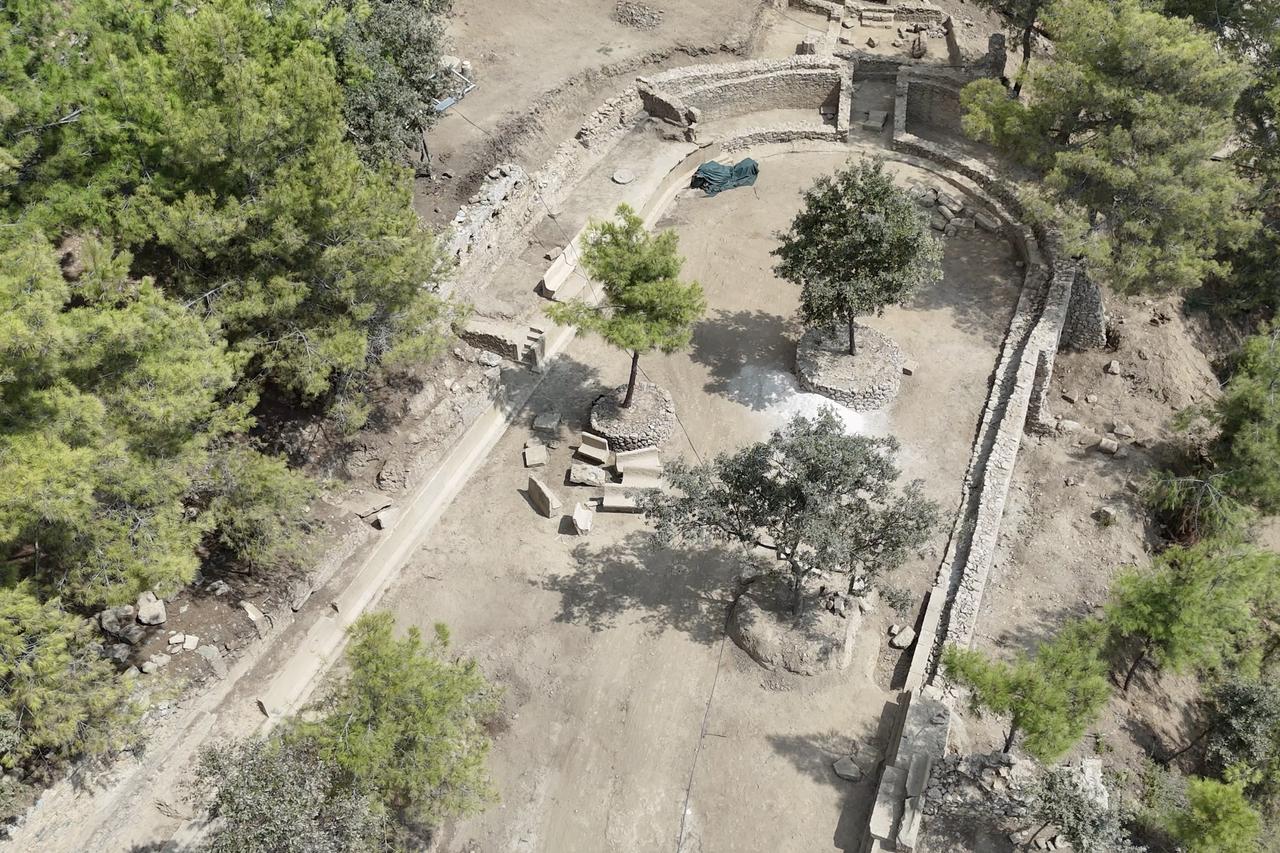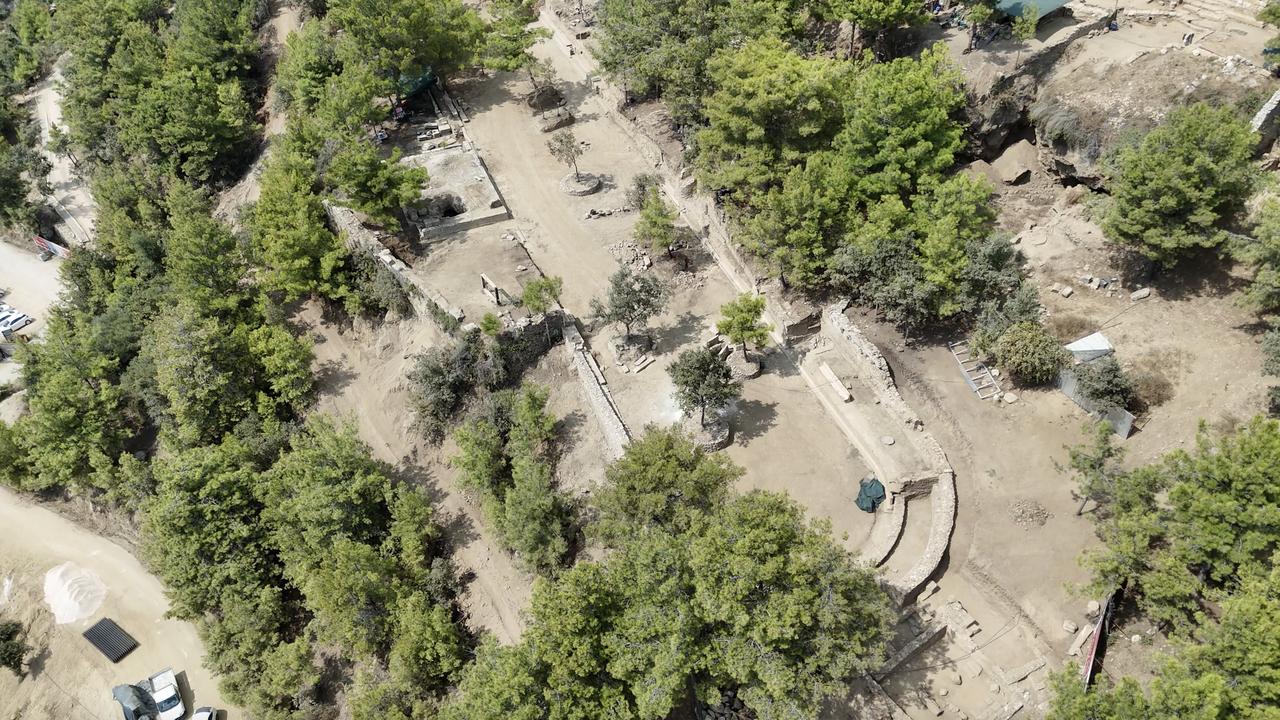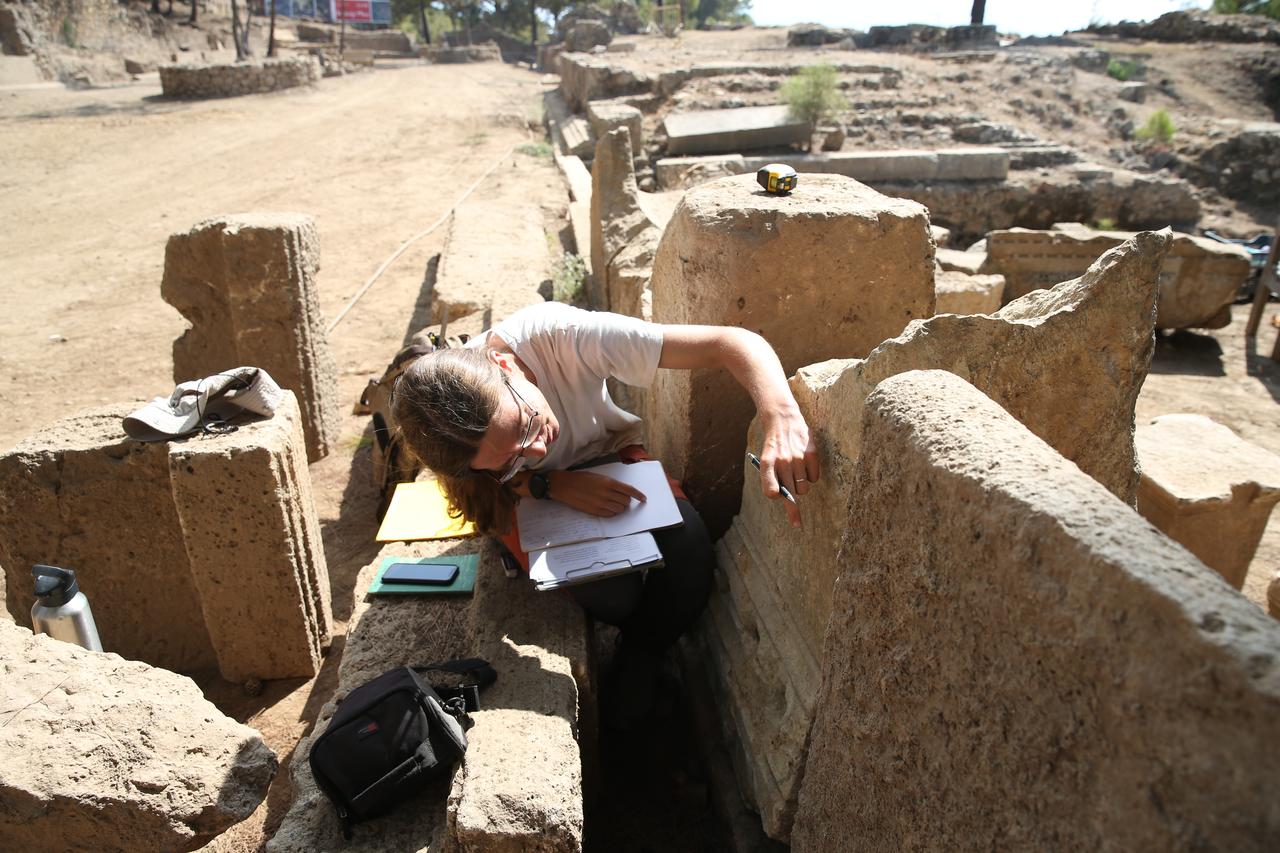
Archaeologists in Türkiye have uncovered a stadium dating back 1,800 years in the ancient city of Syedra, located in the Alanya district of Antalya. The site, which has been continuously inhabited since the ninth century B.C., carries the architectural and cultural imprints of the Hellenistic, Roman, Byzantine, and Anatolian Seljuk eras.
Syedra has long stood out for its monumental remains, including a colonnaded street, a large bathhouse, a council building, and a mosaic floor depicting the twelve labors of Heracles. Other highlights include statues of the goddess Nike, staircases linking its streets, and an extensive water supply system complete with cisterns.
These features, preserved under the Ministry of Culture and Tourism’s “Heritage for the Future” project, continue to shed light on the city’s three-millennia history.

According to excavation director Associate Professor Ertug Ergurer from Alanya Alaaddin Keykubat University, archaeologists this year revealed the remains of a stadium measuring around 200 meters in length and 16 meters in width.
Built directly into the city’s bedrock at an altitude of 340 meters, the structure had been difficult to identify until recently. Ergurer noted that parts of the seating rows were already visible before excavation, but the precise layout of the stadium only became clear during the latest campaign.
Nearly 40 inscriptions discovered in the city refer to athletic contests, particularly wrestling and boxing. Ergurer explained that while these games were central, the stadium likely also hosted athletic competitions, religious festivals, and imperial celebrations. The presence of such a facility indicates that Syedra enjoyed prosperity and status comparable to neighboring cities during the Roman period.

The stadium appears to have accommodated between 2,000 and 3,000 spectators. Ergurer pointed out that while only the stone seating rows remain, evidence from other city buildings suggests that higher rows were made of wood.
The northern section of the stadium is better preserved, while the southern side was heavily damaged by later fortification walls. The craftsmanship of the stone blocks, he added, is among the finest seen anywhere in the city.